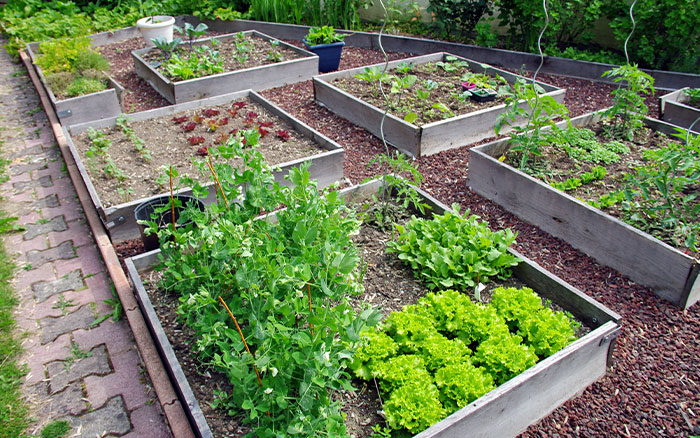The Square Foot Gardening method is a simple way to make the most out of space to grow your own food. It was introduced and developed in the 1970s, and since then has become a mainstream way to garden.
How does square foot gardening work?
Square foot gardening allows many people to get involved with gardening, even with a small space such as a balcony or patio. The method is typically done using raised beds, however it can be done directly into the ground if space allows.
The benefits of using this technique in raised beds makes the garden more accessible, whilst also allowing the perfect soil mix to be used as a solid starting point. Raised beds also reduce the likelihood of walking on the soil which could compact it.
The principal is to plant up each square with a different crop. This means a variety of different crops are grown in a small space. Depending on the size of certain crops will determine how many plants are situated in each section. For simplicity, the method eliminates the need to remember plant spacing as each plant is assigned a number which determines how many can fit into the square foot, as shown below.
Square foot gardens are usually built 4ft by 4ft, to then be split into 4 separate squares for planting.

Plants to grow in a square foot garden
Within each square, a type of crop can be grown. Here are some guidelines on how many of certain plants should be planted in each square.
One plant per square: celery, kale, potatoes, peppers
Four plants per square: basil, leeks, lettuce
Eight or nine plants per square: green beans, beetroot, peas, spinach
Sixteen plants per square: carrots, parsnips, radishes

How to make a square foot garden
So, how do you construct a square foot garden, ready to get growing? As a rough guide, you can refer to this guide I created on how to build raised beds.
In this case you want to use the materials to create a 4ft x 4ft (1.2m x 1.2m) square bed. This will allow you to reach each section without having to stretch or walk over the soil. The beds can be created to any size, as long as the raised bed can be divided into 1ft squares. Therefore if space allows, a long rectangular one can be designed.
The base of the bed can be lined with plastic to protect the outside, and keep the soil and roots in one area. When doing this, make a few holes in the drainage, then fill the bed with peat-free compost.
Once this is done, a wooden grid can be placed over the surface which acts as a divider for the space. If you haven’t got a wooden frame split into 1ft squares, you can use a string and pegs.
Then, you’re ready to get planting.

Tips for a square foot garden
Due to the space saving method, there are some considerations when it comes to planning which plants will go where.
For example, some plants like celery grow taller than radishes. Therefore, it’s ideal to plant the tall plants nearer the centre of the bed, with shorter growing ones nearer the edge.
Also, it’s worth taking into account the position of the bed because some spots may be shadier than others. So, ensure that sun-loving or shade-loving plants get a suitable spot.
Another factor to remember is that some plant combinations need to be avoided. Beans don’t grow their best near onions or garlic, so they should be planted away from each other. On the other hand, radishes grow well with lettuce and peas.


Leave A Comment